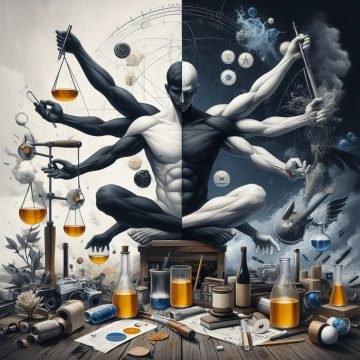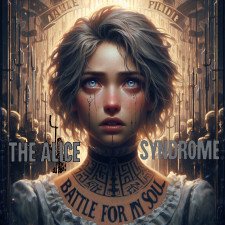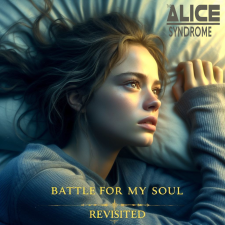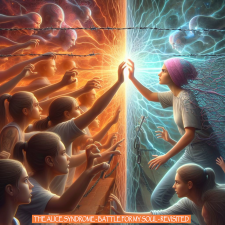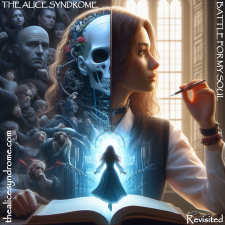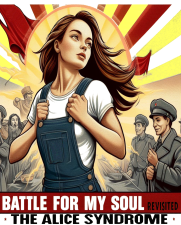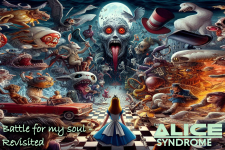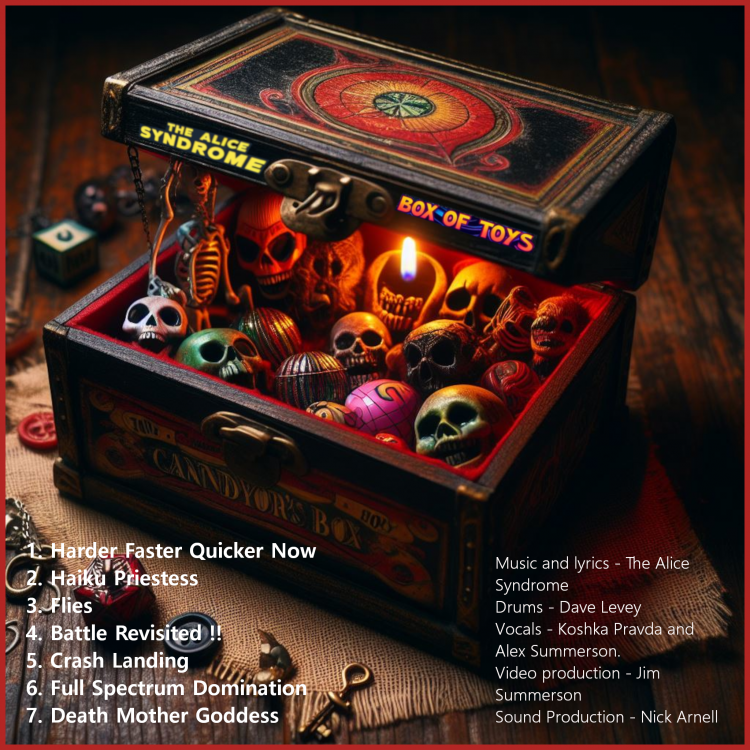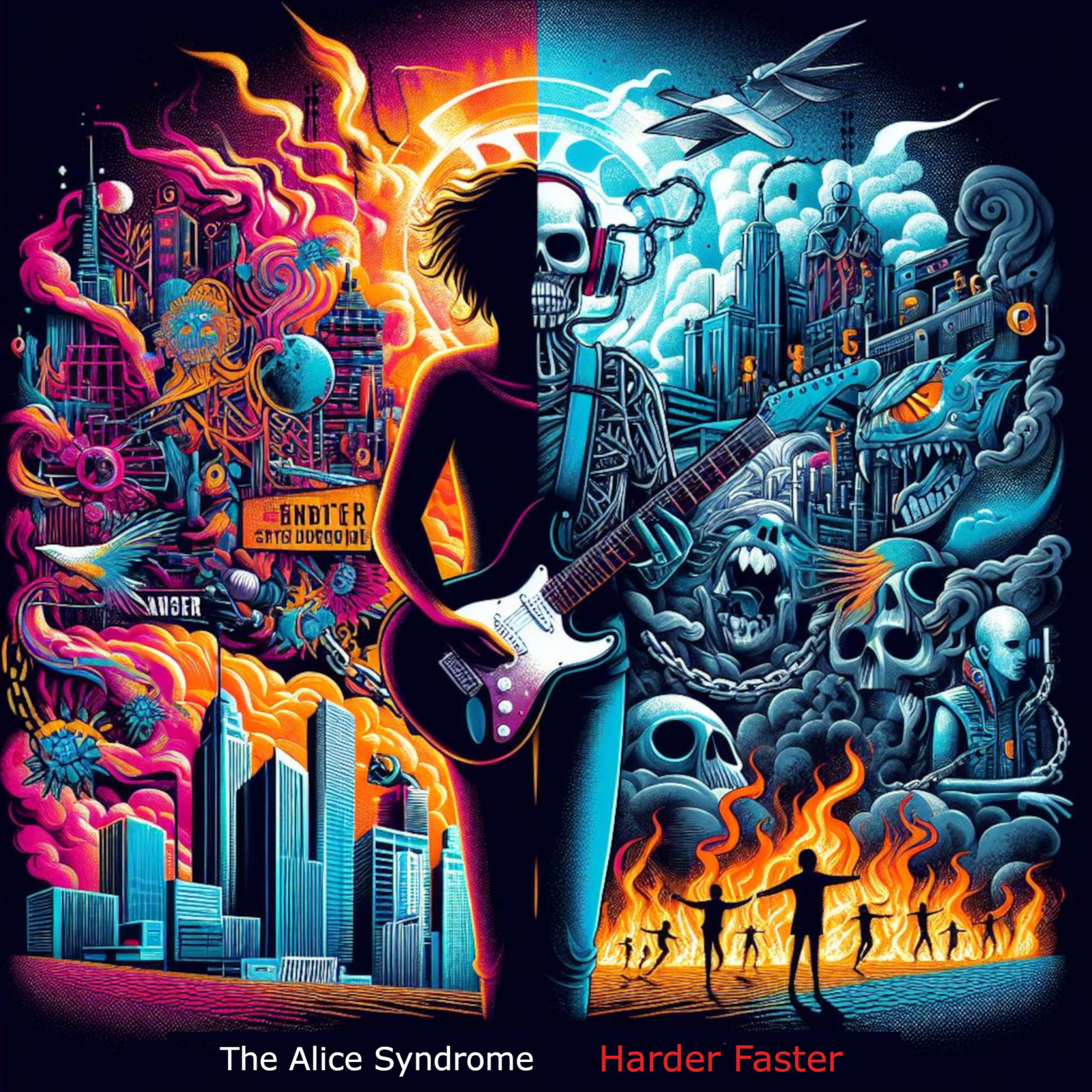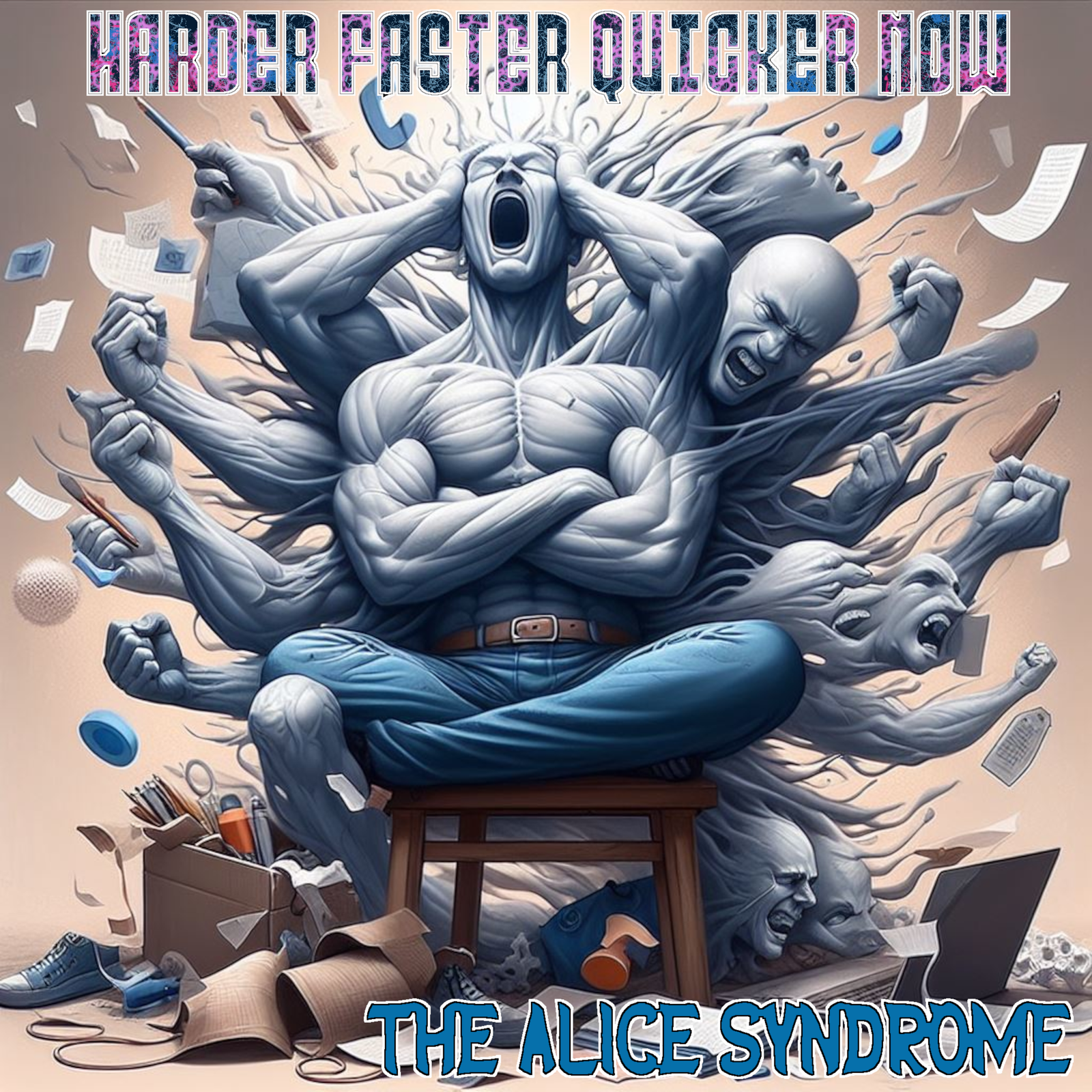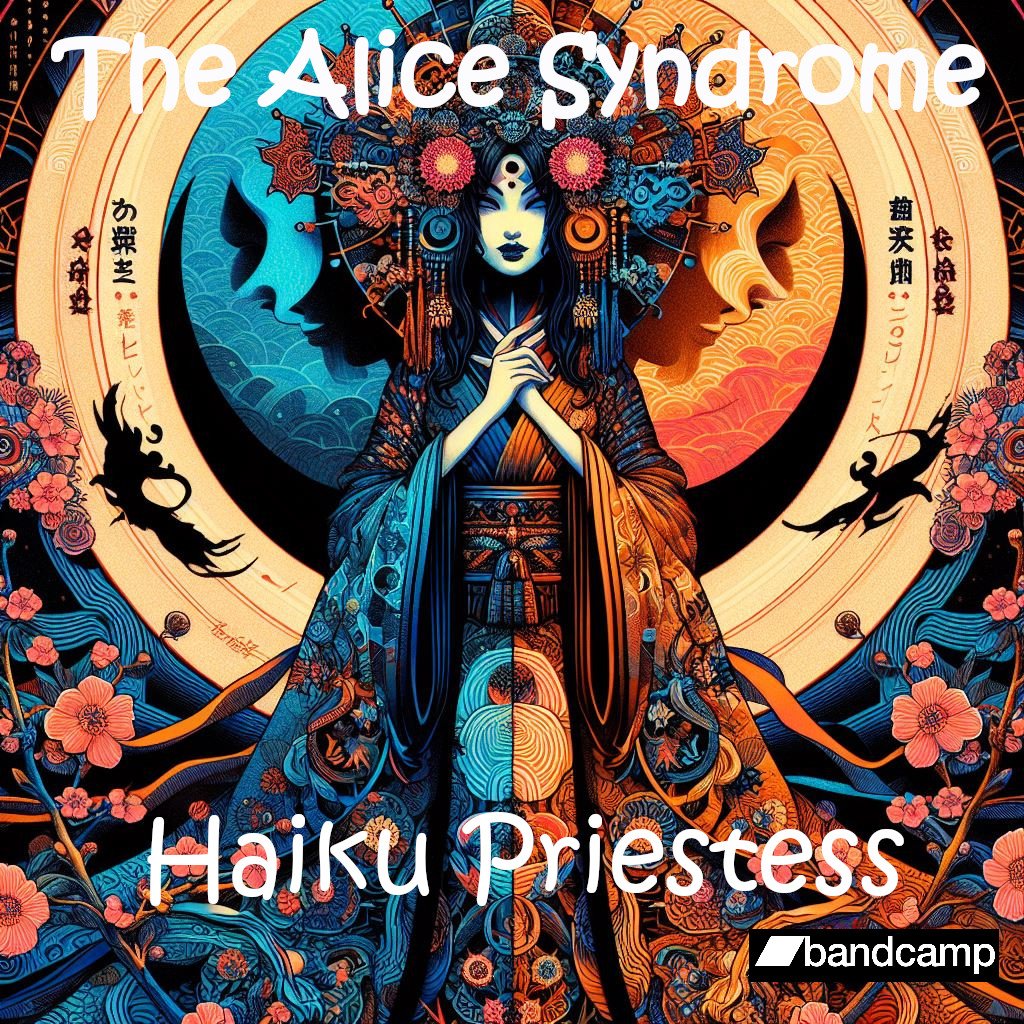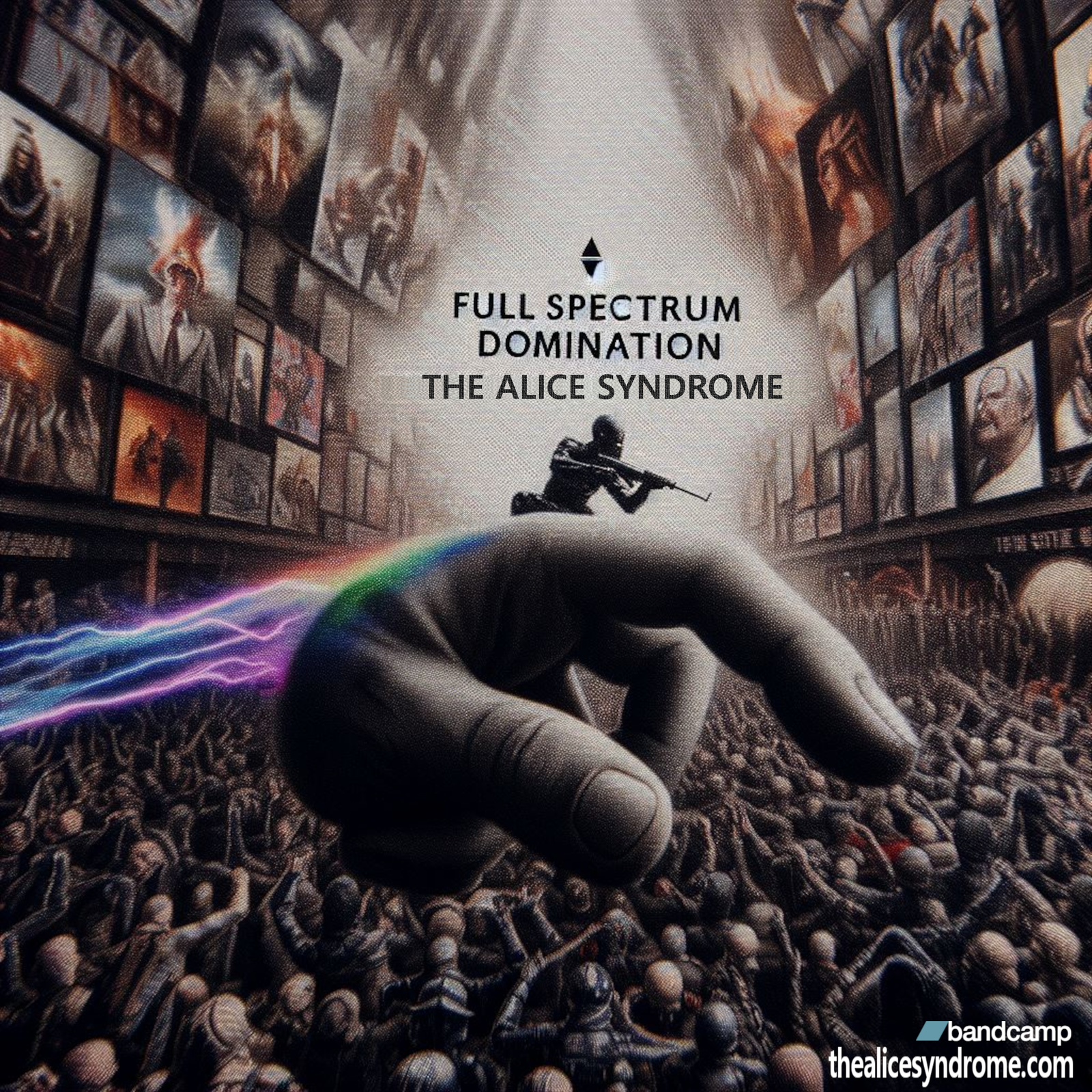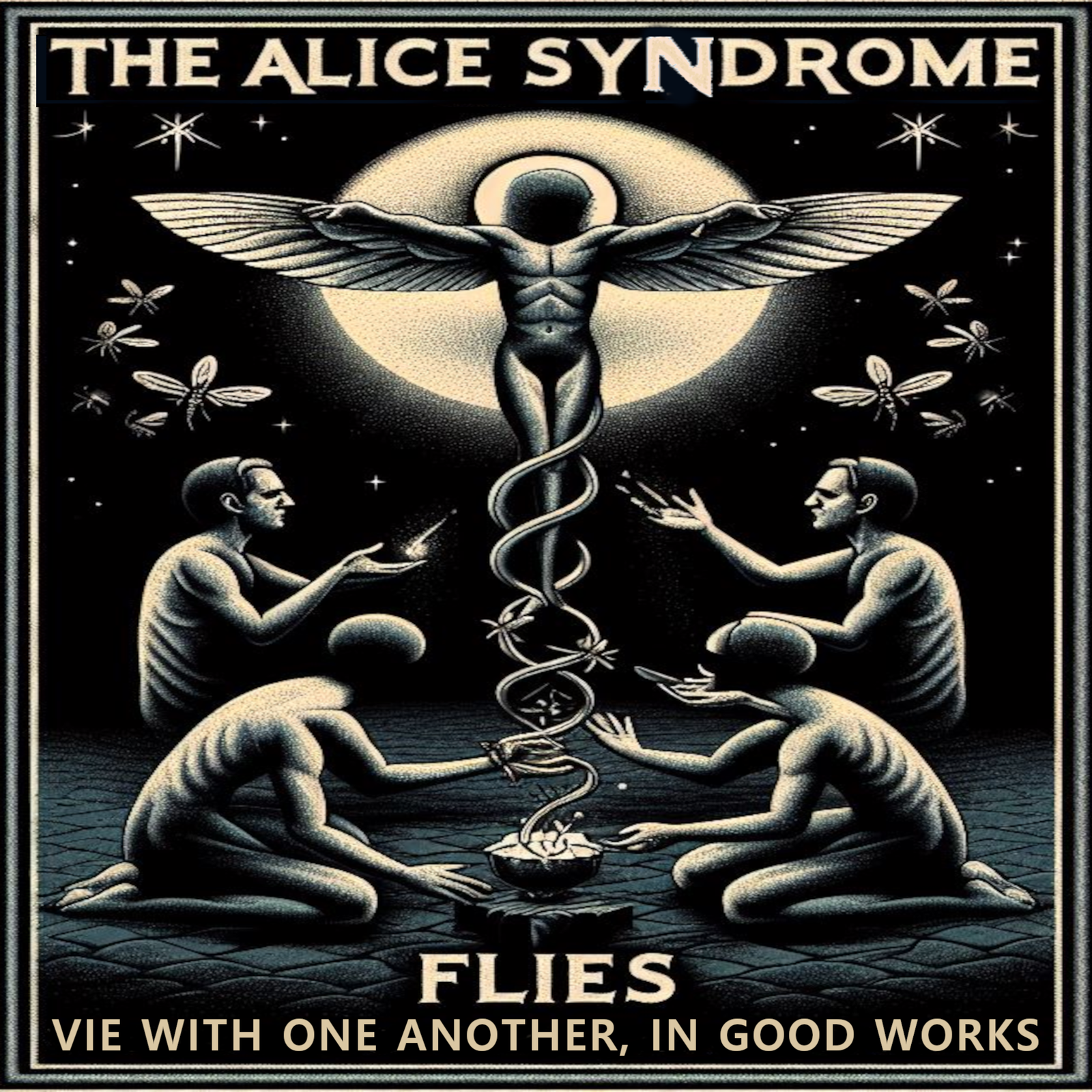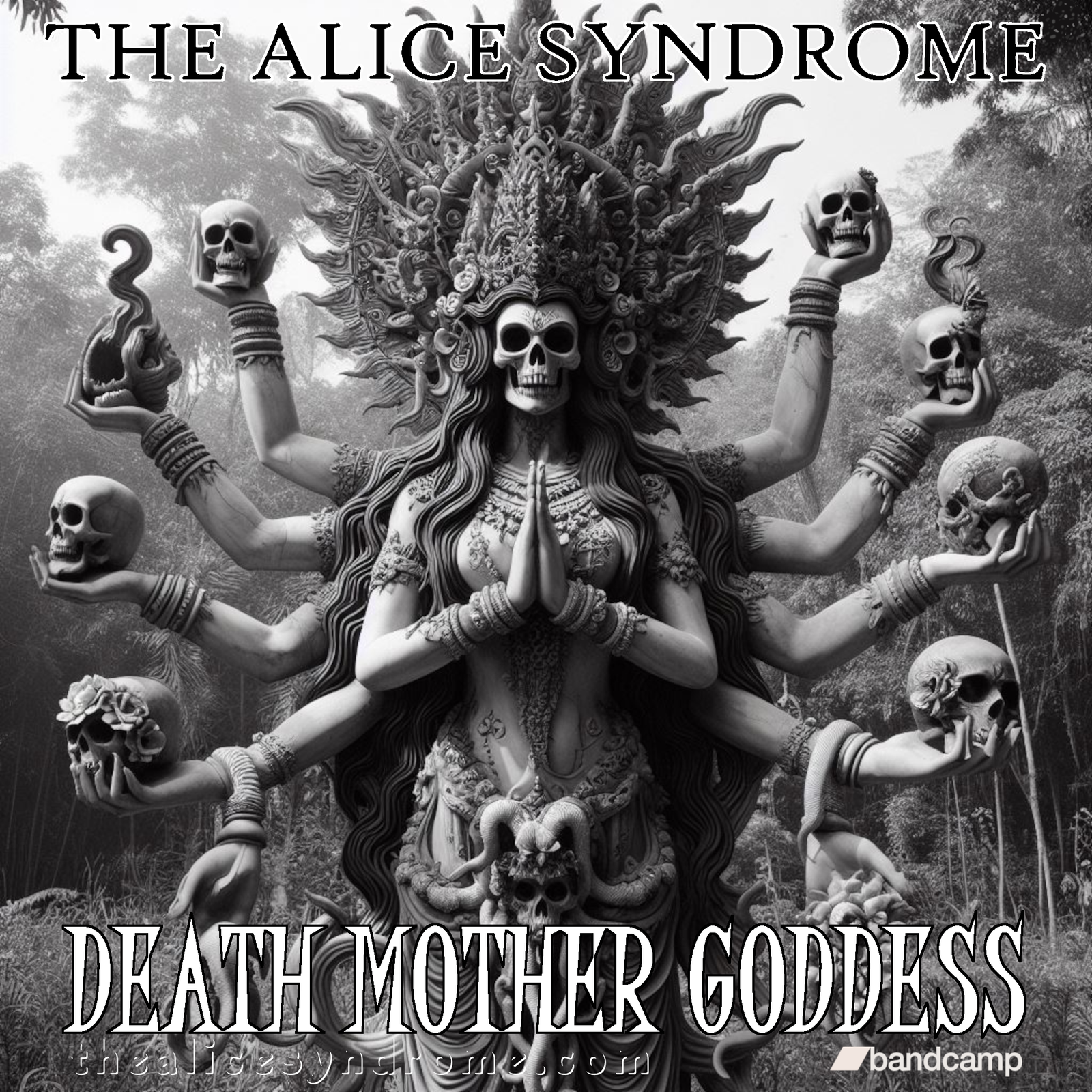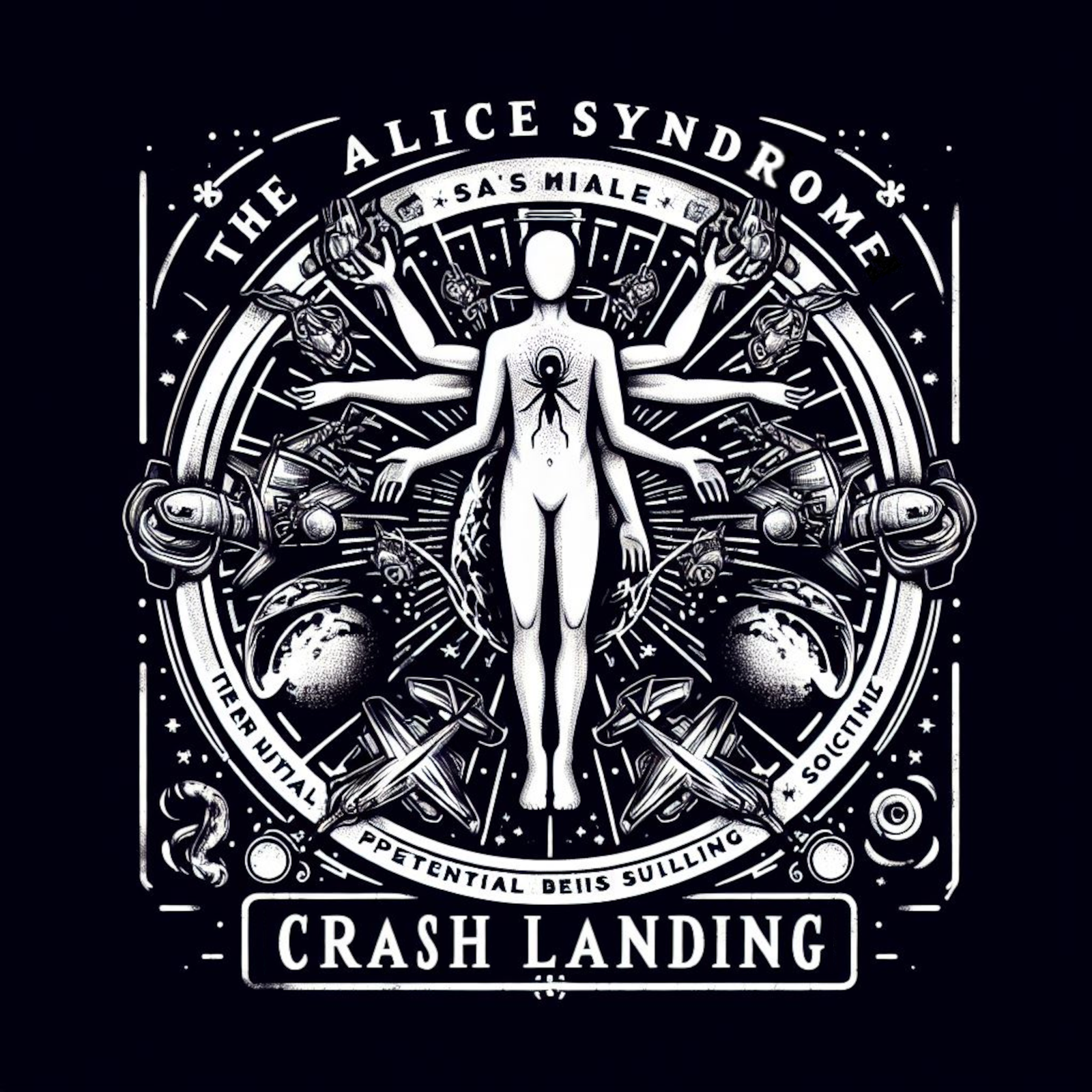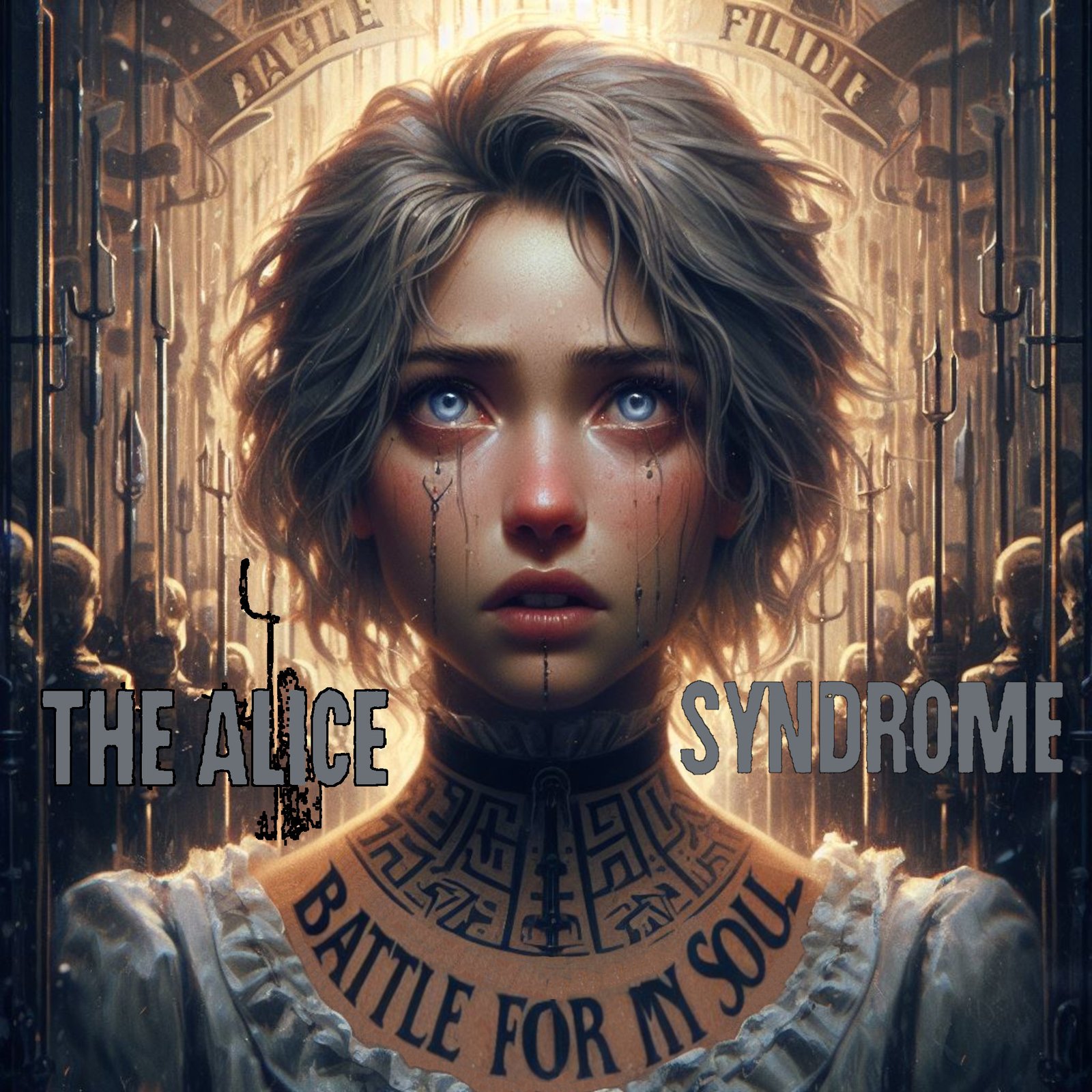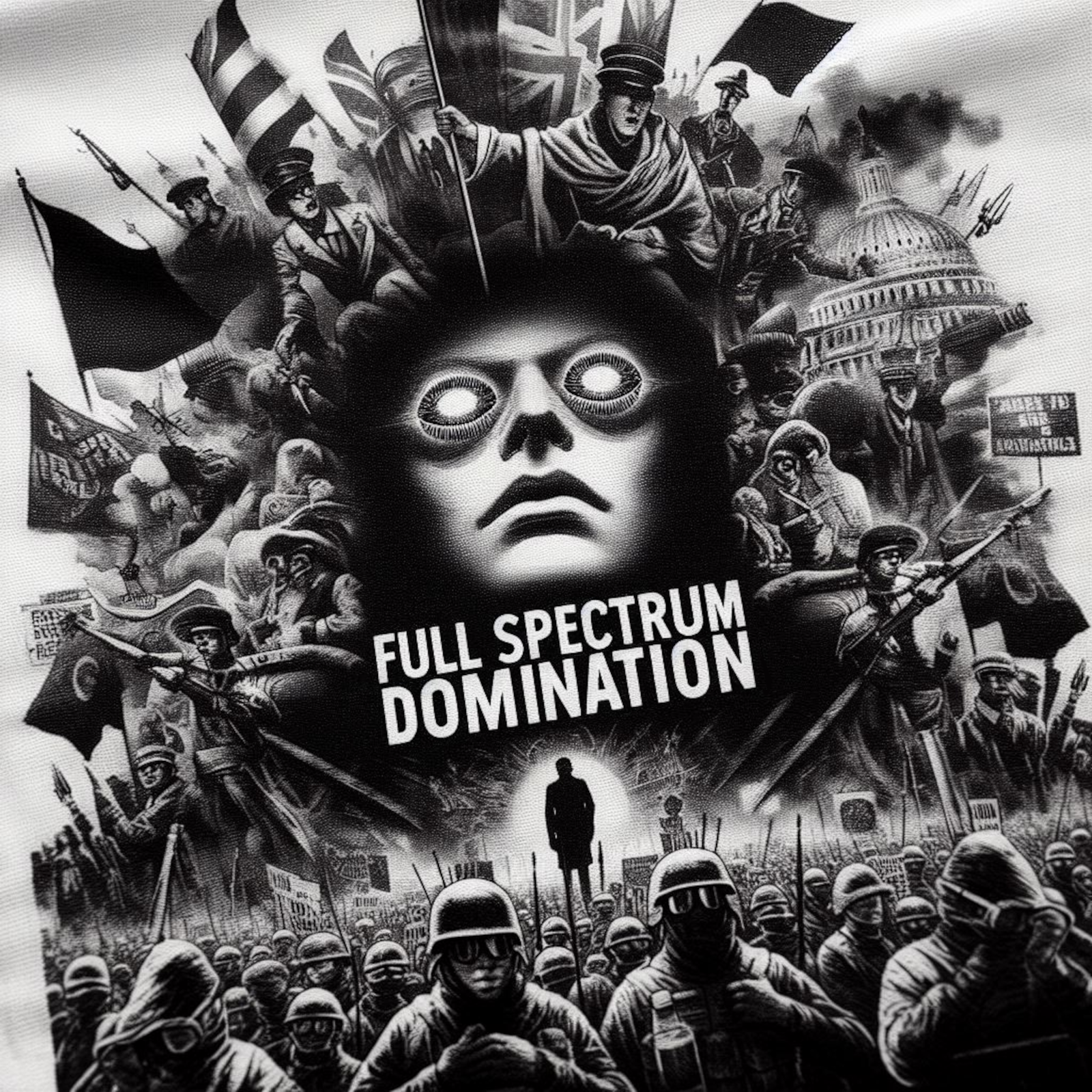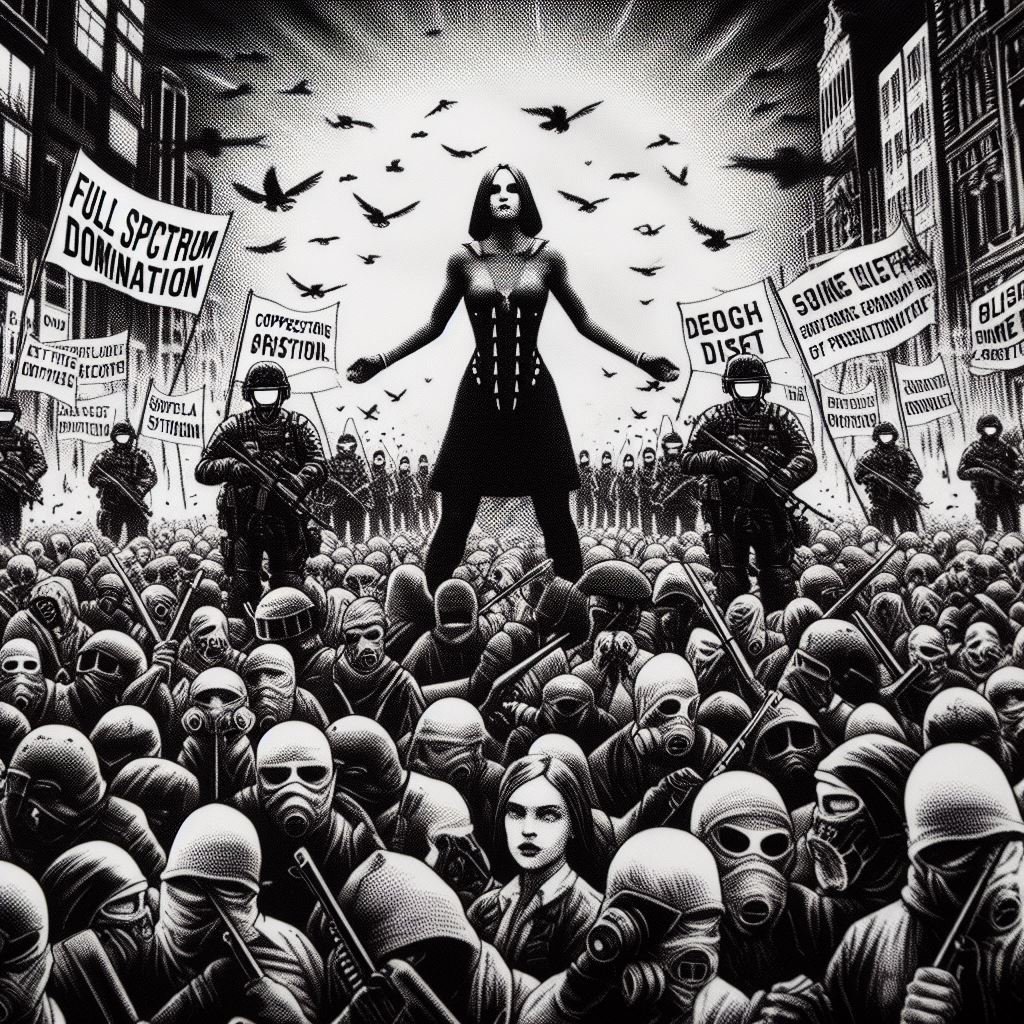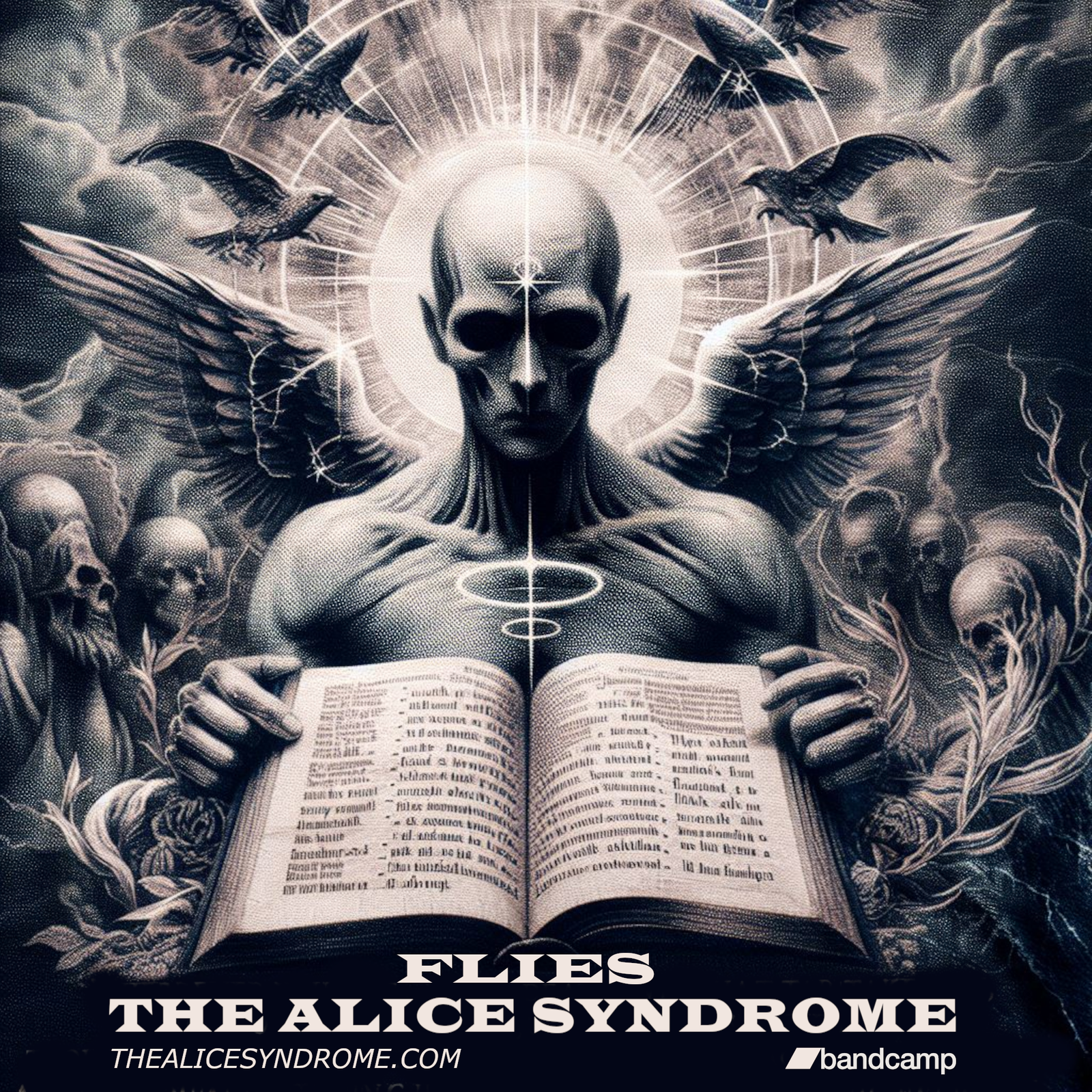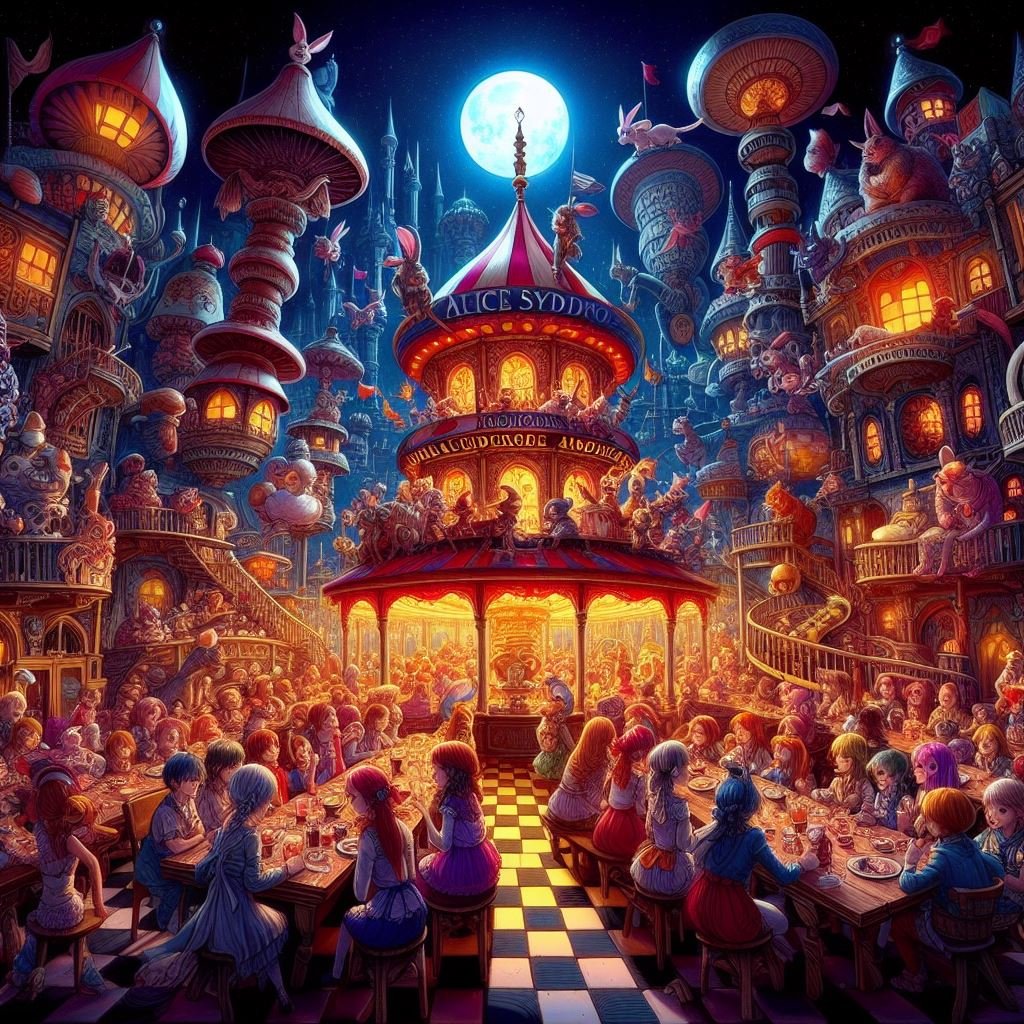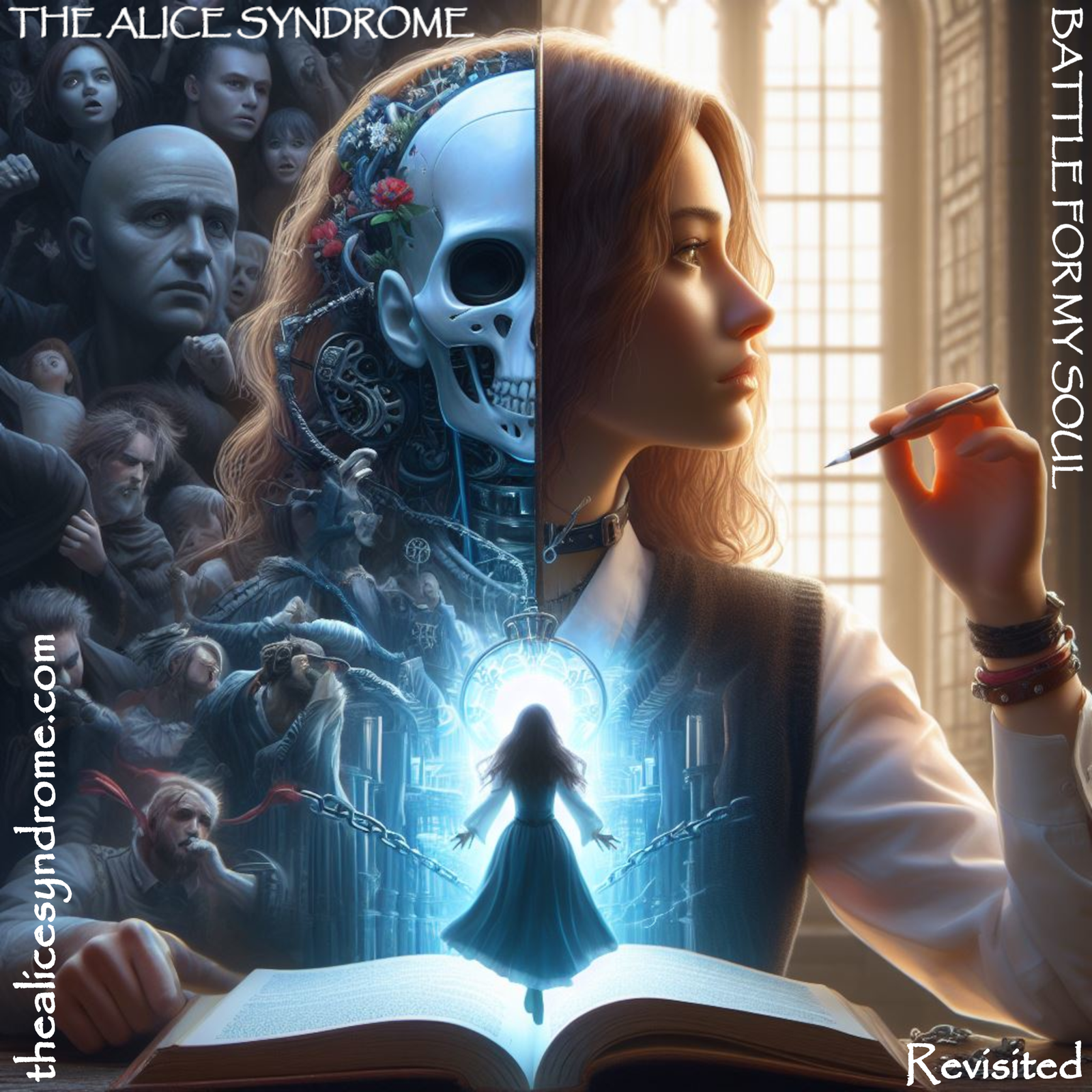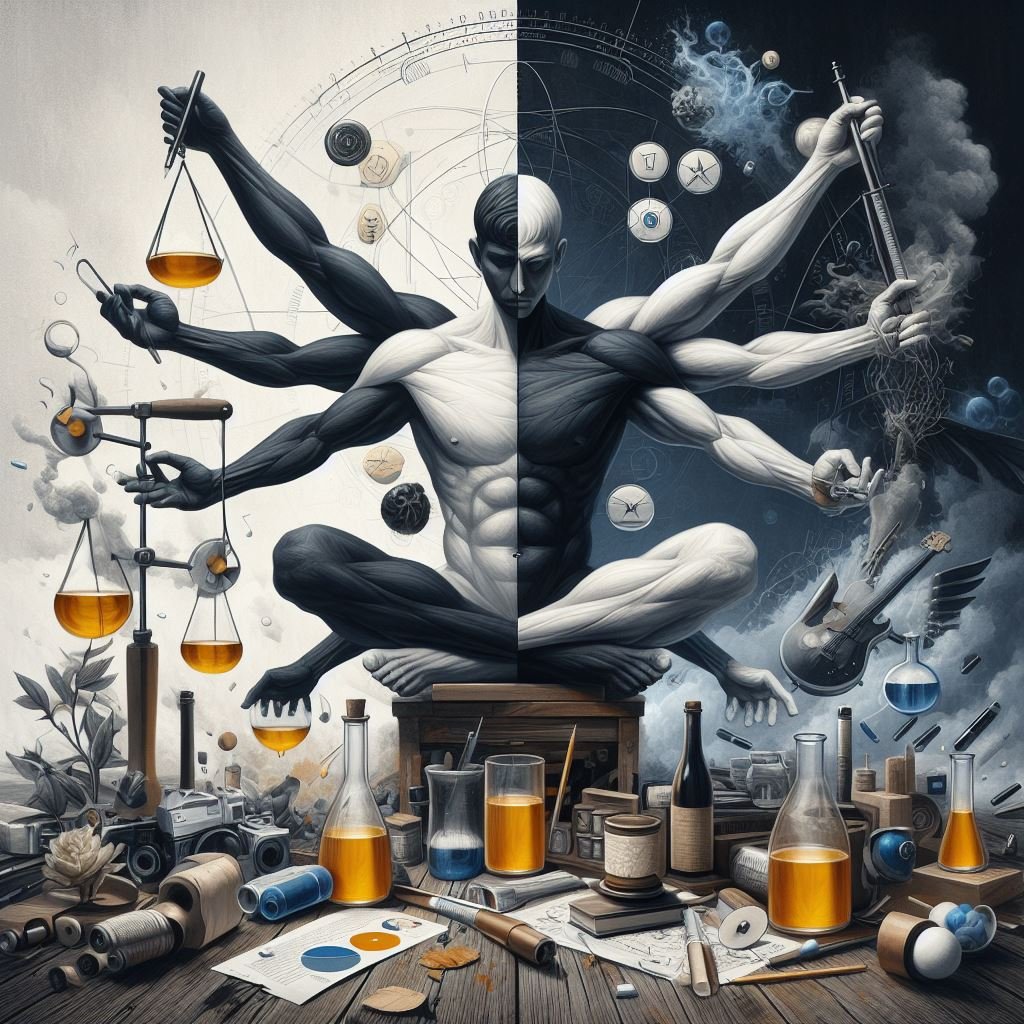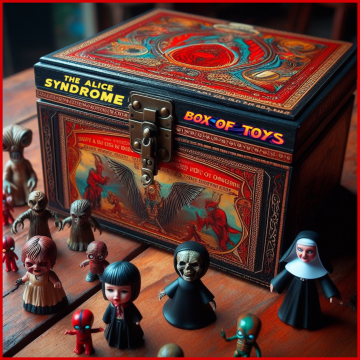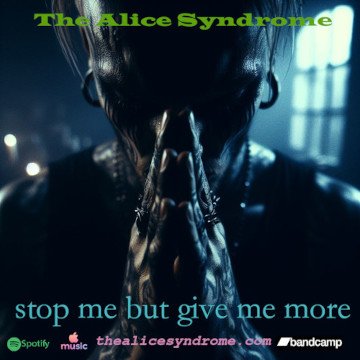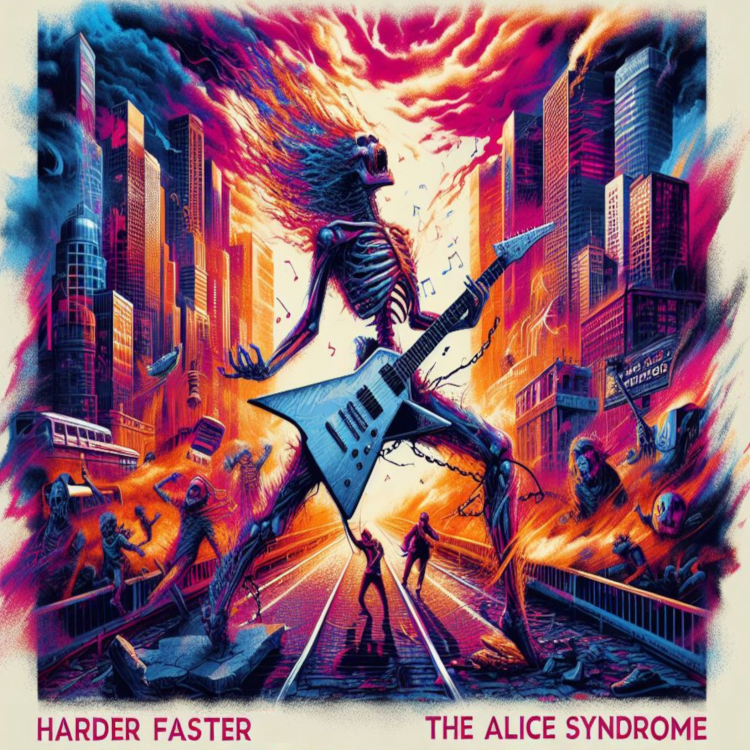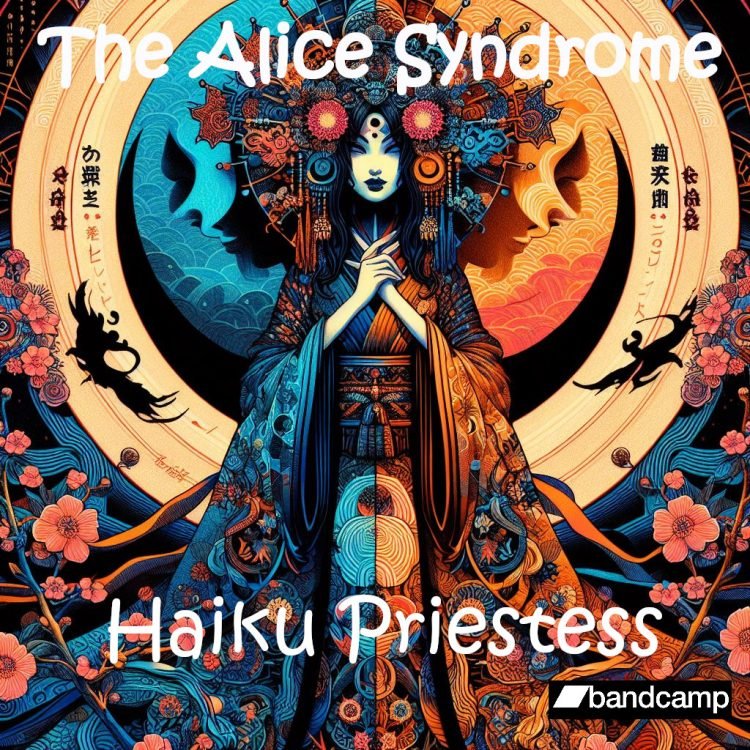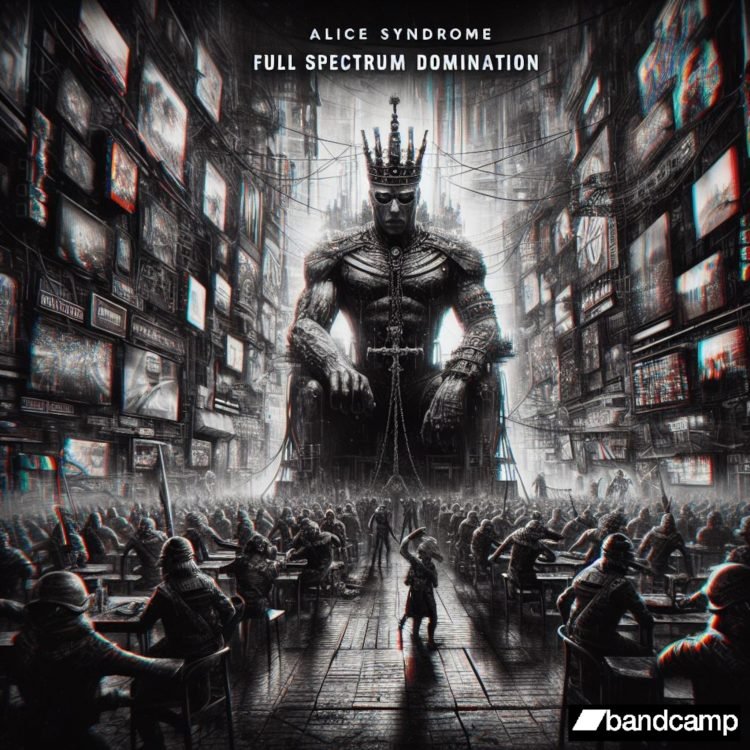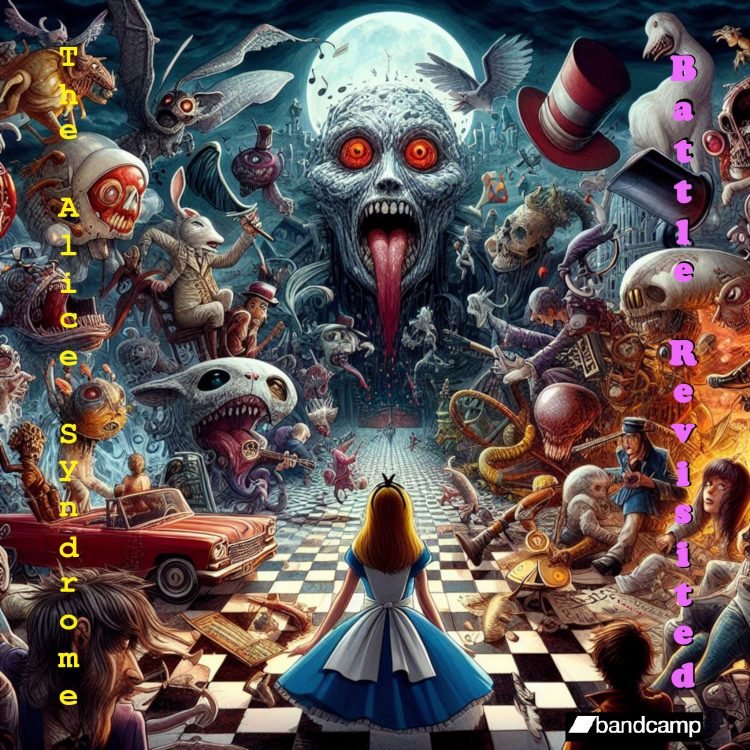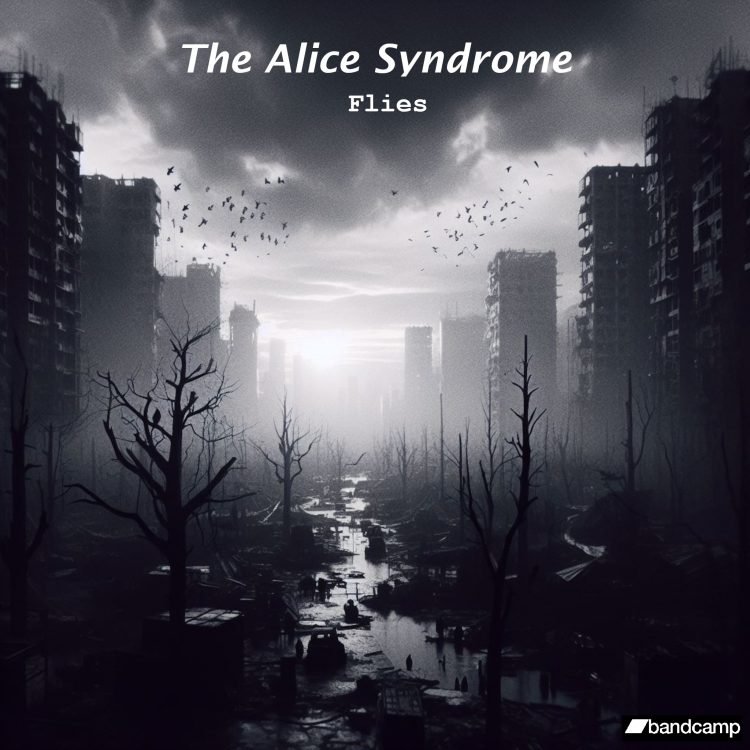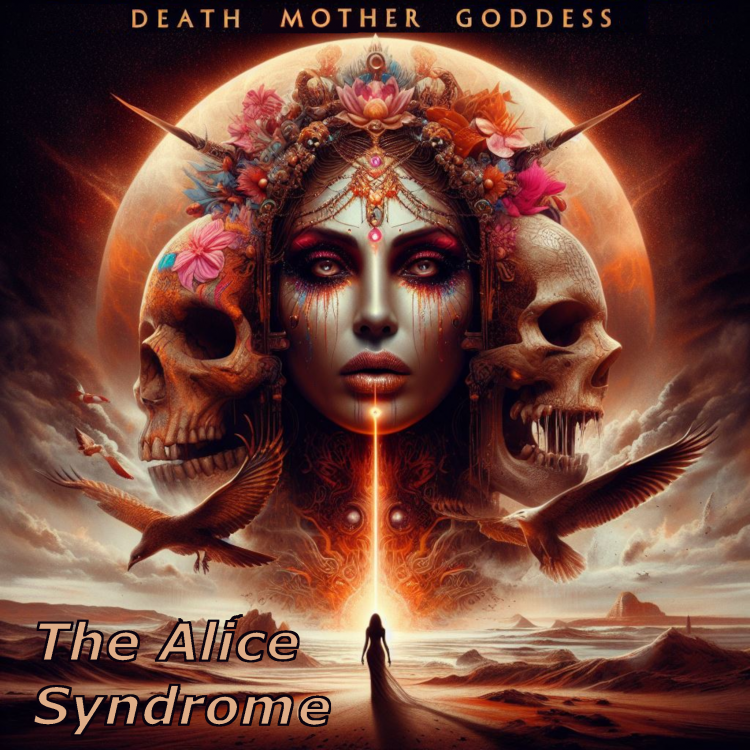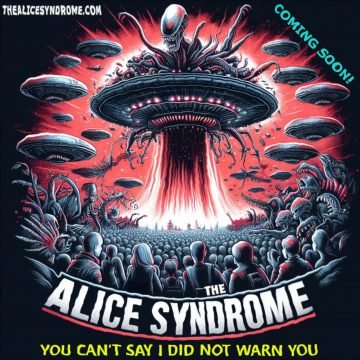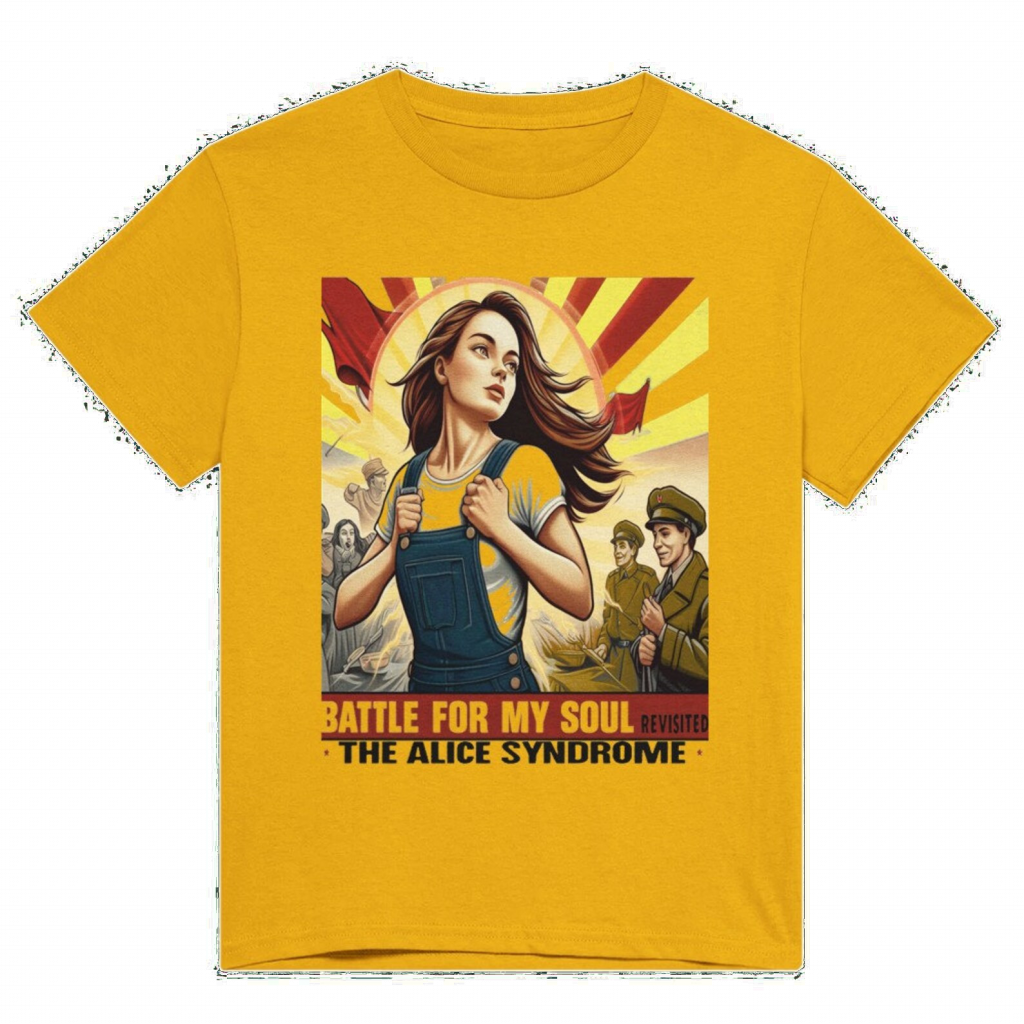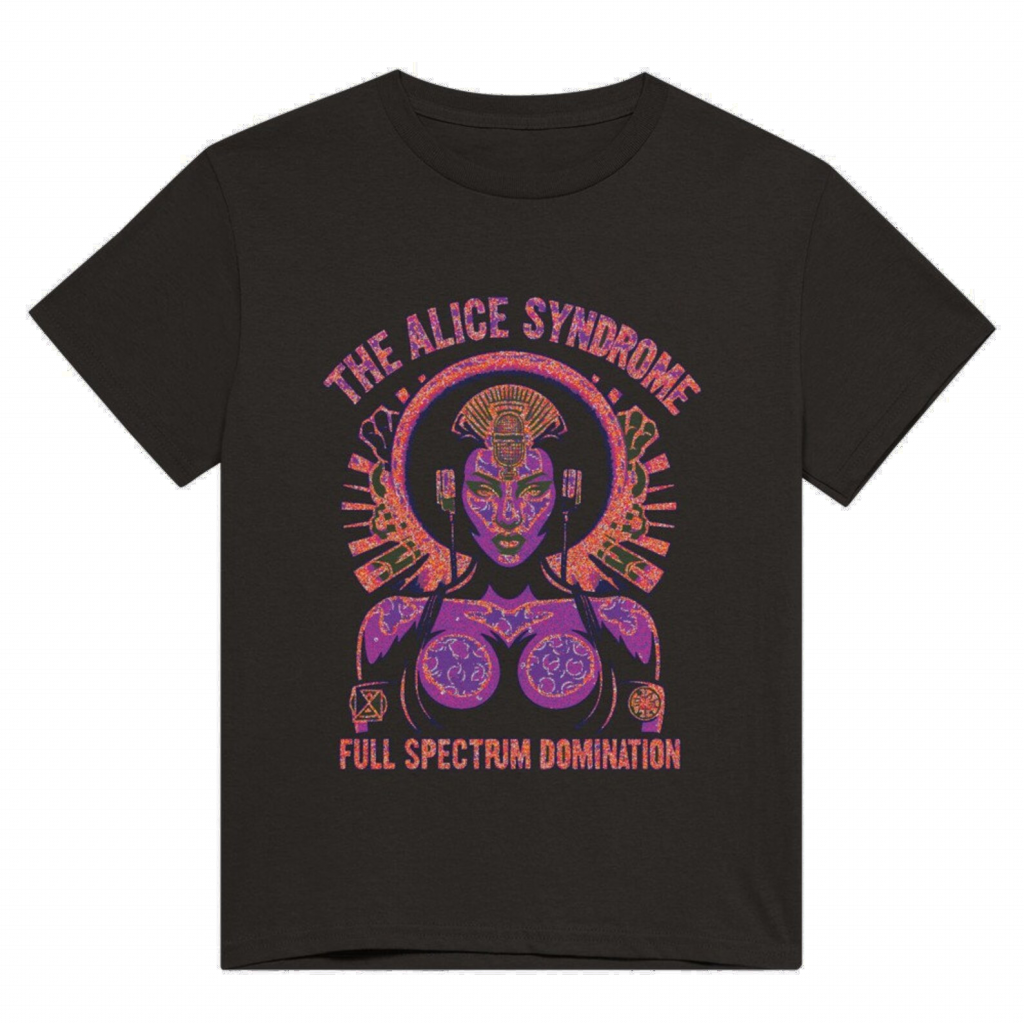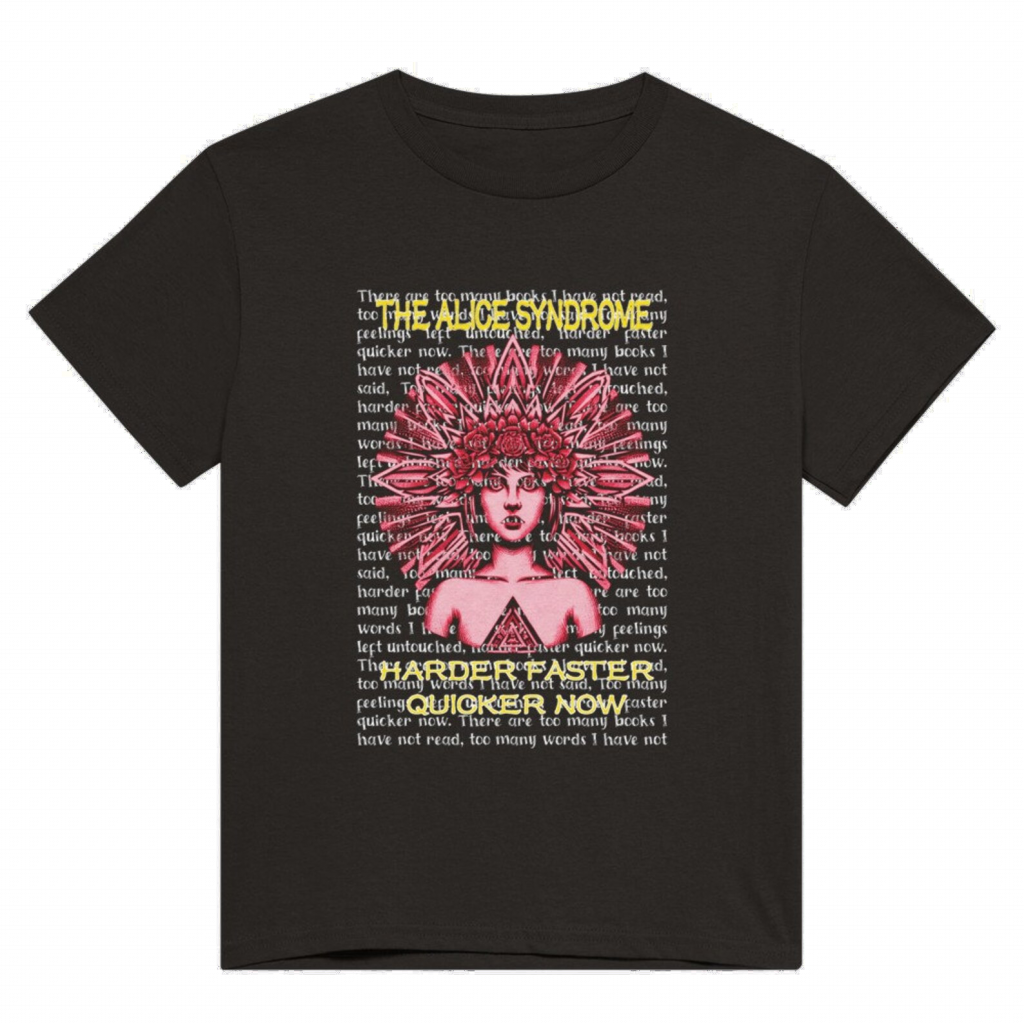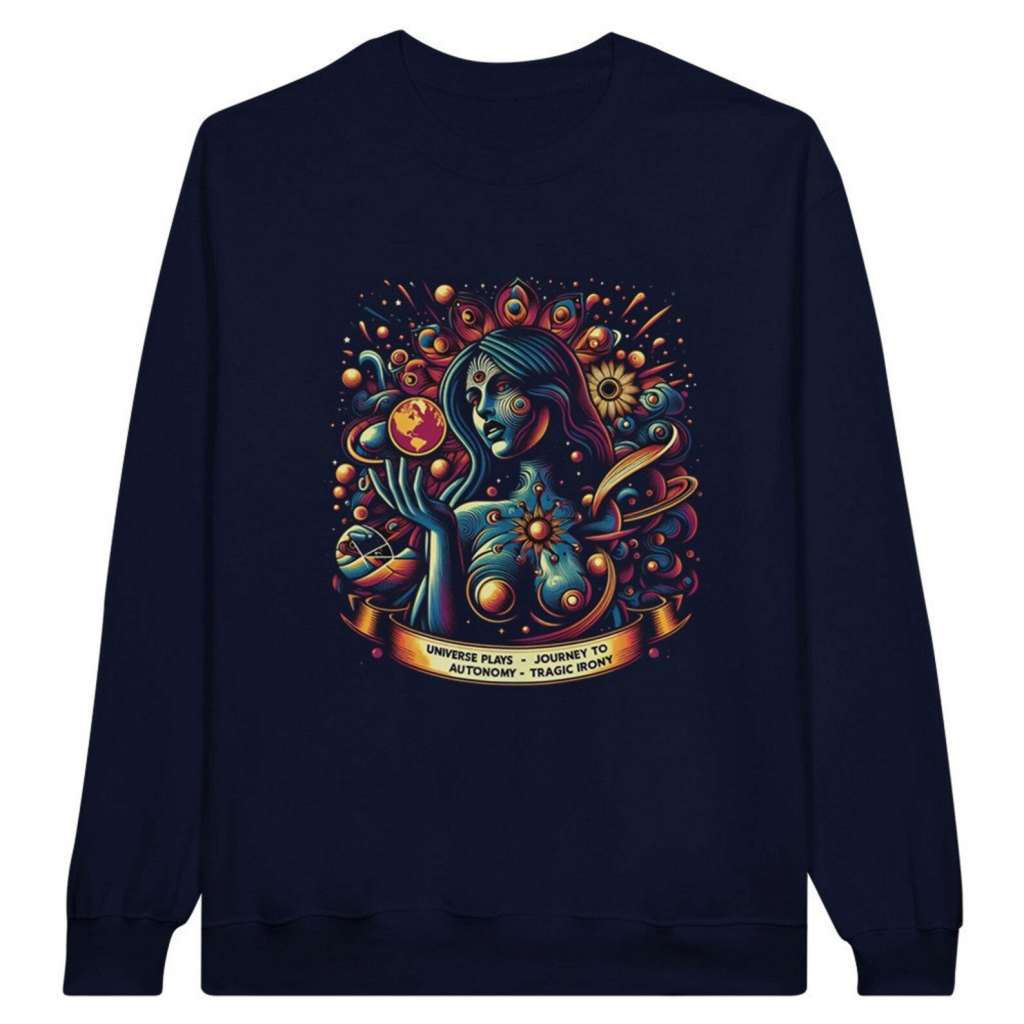This week we are releasing a new version of our track – Battle for my soul. This is part of a series of remixes we are calling the Void Edit. Providing me with a chance to reassess what this new version says to me.
Category: Battle for my soul

Welcome to George’s blog. I play keyboards in the Alice Syndrome, and I’m also very interested in psychology, spirituality and self-transcendence. Groovhead tends to write all our lyrics, which always touch on subjects that hit deep into my interests.
This week we are releasing a new version of our track – Battle for my soul. This is part of a series of remixes we are calling the Void Edit. Providing me with a chance to reassess what this new version says to me. As I see it, every expression of self is an attempt to answer a question which in itself can be unexpressed. So I like it when we take another look at a track and I get to ask what I was trying to say here?
I listened to the track, and the first this I thought, is that through it, we are revisiting that internal duality of the combination of the desire to have full freedom, combined with the insecurity that once free, there is no-one to tell us what to do, or if our decisions are correct.
This inquiry into the human psyche’s paradoxical yearning for absolute autonomy, juxtaposed with the trepidation of unguided decision-making, is a profound one. This internal conflict is explored within various psychological and philosophical frameworks. Existentialism, for instance, delves into the essence of human freedom and the inherent responsibility that accompanies it, highlighting the angst that arises from making choices without external direction.
Similarly, humanistic psychology examines the individual’s pursuit of self-actualization and the challenges encountered in achieving it without reliance on authoritative guidance. These disciplines affirm that while freedom is a fundamental human aspiration, it is often accompanied by a sense of disquietude regarding the correctness of one’s choices in the absence of societal or authoritative validation.
Through our video, we are also signalling the reflection of this internal paradox as it can appear through externalisation, through the fight for freedom, counterbalanced by societies need to control us, to protect us, apparently, from ourselves.
“I will not comply” says our vocalist, but also, she wants reassurance. Thus, we have the needs to the child emerging into adolescence coming into focus, we see the interplay as the dance of growing up continues, as the responsibility for the care of the child, passes from the parent to the emerging adult.
From a void perspective, we have to take ourselves back to the ultimate void thought: That nothing exists, that somehow, everything that we perceive, is a figment of our own imagination, made up to comfort ourselves about this stark fact, that we are the awareness of the nothing, reinventing itself in its dream of existence.
Whilst this is a thought, which, on the surface, can be deeply disturbing, it does lead to an ultimate kind of freedom – The freedom of the knowing that everything that exists, and you experience is of your own creation.
However, this ultimate freedom comes with another issue, that of responsibility. If we are creating the reality we perceive, then we must take responsibility for that creation, yet, how do we know our decisions are the right ones?
This leads to a void creation myth I’ve just imagined. That of the void deciding it would look into itself deeply, and find itself, and in the process, what it found was a huge mass of disconnected things, like an infinite jigsaw. The void saw that these were components of an unrealised self, that each of these components did not work because they did not trust each other and were not talking, so in the mind of the void, it created a game-space where those components could get to know themselves and others, where they could work out their differences without knowing their true purpose until right at the end.
This creation myth then goes on to explain that the void decided to sort these components out into orders, and the first separation was the dark ones, and the light ones. At that point, it was all that was known. But by grouping those aspects of its future self together like this, an oppositional kind of internal logic turned into a force of insight, allowing the void to separate out further colours, and with each colour came names and descriptions. Pieces of a new unfolding picture, not of the ultimate self, but of the development flow needed for the void to think itself real.
Relating this to the theme of our song, then this could be reflecting the internal mindset of the void, realising that the God it needed to believe in, can finally be accepted as being one of its own creation. A stepping stone belief to the understanding that there is no God but self.
Can the void trust itself and it’s components to take the right decisions? Who will judge what is wrong and what is right, if the guidance the void followed to get to this point, turns out to have come from self, in a way that the void itself cannot explain, but feels it will be explained, if it can correctly connect its components, and understand the self it feels it was designed to become.

This is the merchandise summary page for our track, Battle for my soul revisited.
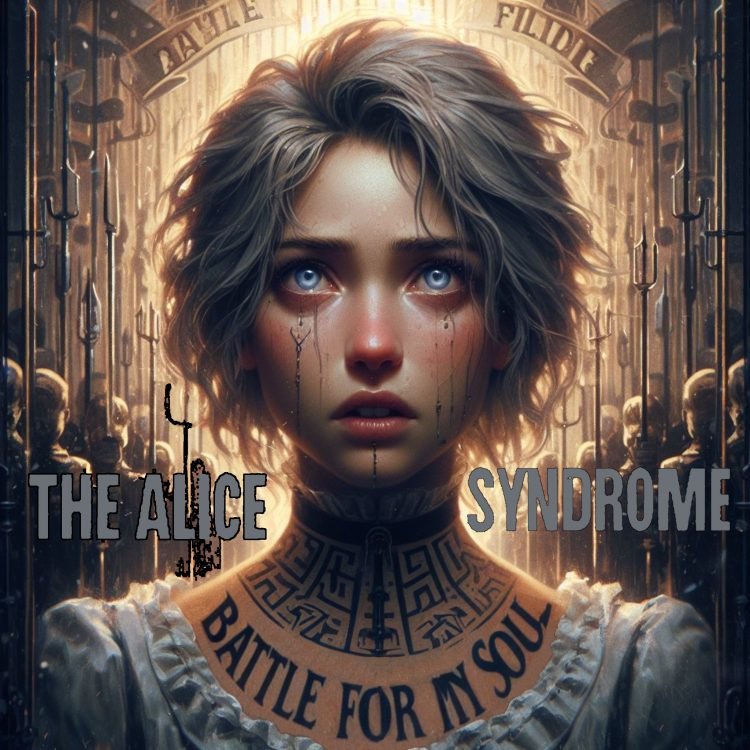
Welcome to George’s blog. I play keyboards in the Alice Syndrome, and I’m also very interested in psychology, spirituality and self-transcendence. Groovhead tends to write all our lyrics, which always touch on subjects that hit deep into my interests.

Lyrics But I will resist in any way I can I will not comply I will not comply Repeats…..
There’s a battle raging in my soul
there are those who would wish to lead me
to satisfy their own agenda’s and aims
To the point where my existence
Becomes an act of resistance
I want you to reassure me
I want you to reassure me
The song, Battle for my soul revisited !!, is a powerful expression of the individual’s struggle against external forces that try to manipulate and control them. The lyrics suggest that the singer is facing a conflict between their own desires and values, and those of others who have different agendas and aims, and exercise control over them. The song declares that these influences will be resisted, even if it means that very existence becomes a form of defiance. The chorus repeats the phrase “I will not comply”, which shows a determination to remain true to self, and also the need for reassurance from others, who can provide understanding and support.
The song can be interpreted as a commentary on the social and political issues of our time, such as the rise of authoritarianism, censorship, propaganda, and surveillance. It proposes that personal freedom and identity are threatened by these forces, and that we have to fight for their rights and dignity.

The song also reflects a common theme in rock music, which is the rebellion against conformity and oppression. Some examples of songs with similar themes are “The Sound of Silence” by Simon and Garfunkel, “Another Brick in the Wall” by Pink Floyd, “Killing in the Name” by Rage Against the Machine, and “Uprising” by Muse.
The world of psychology recognises that often external pressures can cause us to deny and disconnect with our true selves in favour of conforming to the needs of others to feel loved or accepted. This disparity between one’s true thoughts and actions, and the failure to express them, or accept that they are true, is called a lack of self-congruence.
One of the psychological theories that deals with the aspect of human nature related to self-congruence is Carl Rogers’ humanistic theory. According to Rogers, self-congruence is the degree of alignment between one’s self-image, ideal self, and actual experience (Stevenson, 2022). When a person’s self-concept is congruent, they feel authentic and satisfied with themselves. When a person’s self-concept is incongruent, they feel dissatisfied, unhappy, and even mentally ill (Rogers, 1959).
Rogers’ theory of self-congruence assumes that humans have an innate tendency to grow and actualize their potential, which he called the actualizing tendency. However, this tendency can be hindered by external or internal factors that create a gap between the person’s self-image (how they see themselves), ideal self (how they want to be), and actual experience (how they really are). This gap is called incongruence, and it causes psychological distress and maladjustment (Rogers, 1961).
One of the factors that can contribute to incongruence is the presence of conditions of worth, which are expectations or standards that others impose on the person, or that the person internalizes from others, regarding their value or worthiness. For example, a person may believe that they are only worthy of love and acceptance if they achieve certain goals, behave in certain ways, or conform to certain norms. These conditions of worth can conflict with the person’s true feelings, needs, or desires, and thus create incongruence between their self-image and their actual experience (Rogers, 1959).
Another factor that can affect congruence is the degree of unconditional positive regard that the person receives from others, especially significant others such as parents, teachers, or friends. Unconditional positive regard is the acceptance and appreciation of the person as they are, without any judgment or evaluation. When a person receives unconditional positive regard, they are more likely to develop a positive and realistic self-image, and to align their ideal self with their actualizing tendency. When a person receives conditional positive regard, which is based on meeting certain conditions of worth, they are more likely to develop a negative and distorted self-image, and to adopt an ideal self that is incongruent with their actualizing tendency (Rogers, 1961).
Therefore, according to Rogers’ theory, congruence is essential for psychological well-being and optimal functioning. Congruence allows the person to be true to themselves, to express their feelings and thoughts honestly, to pursue their interests and goals freely, and to relate to others authentically. Congruence also facilitates self-actualization, which is the realization of one’s full potential as a human being (Rogers, 1959).
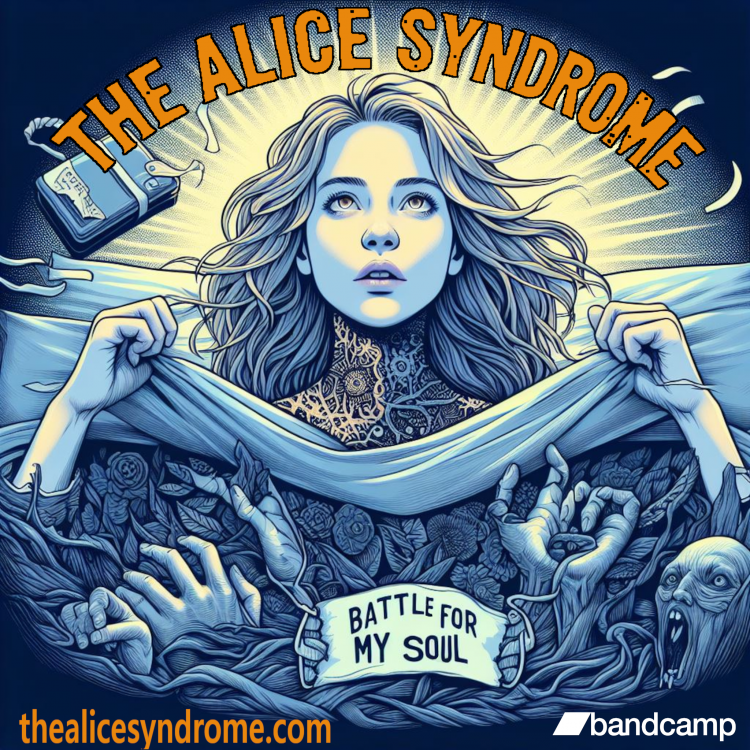
However, achieving congruence can be very challenging for someone who has low self-esteem and confidence, and who faces strong societal pressures to conform or fit in. Such a person may have a negative self-image that does not reflect their true abilities or qualities. They may also have an unrealistic or idealized ideal self that does not match their actual experience or potential. They may feel that they have to hide or change their true selves to be accepted and loved by others. Furthermore, they may experience anxiety, guilt, shame, or anger when they perceive a discrepancy between their self-image, ideal self, and actual experience. They may also resort to various defence mechanisms such as denial, rationalization, projection, or repression to cope with their incongruence (Rogers, 1961).
For example, a person who has low self-esteem and confidence may believe that they are not smart enough, attractive enough, or successful enough to be worthy of respect or admiration. They may also have an ideal self that is based on unrealistic or external standards of beauty, intelligence, or achievement. They may feel pressured by their family, peers, or society to conform to these standards to gain approval or recognition. Furthermore, they may try to hide their perceived flaws or shortcomings by wearing masks or playing roles that are inconsistent with their true-selves. They may also avoid situations or activities that challenge their self-image or expose their incongruence.

Rogers’ theory can be related to the song “Creep” by Radiohead, which expresses the feelings of an outsider who does not fit in with the society’s expectations and norms. The lyrics of the song suggest that the speaker has a low self-image and a high ideal self that they cannot attain. They feel alienated and unworthy of love from the person they admire. He also feels guilty and ashamed of his own existence, as he says, “I don’t belong here” and “I wish I was special”. These are signs of a severe incongruence between his self-image and his ideal self, which leads to a lack of self-esteem and self-acceptance.
Low self-esteem and self-confidence, in my opinion, comes from a lack of wholeness; a lack of inner connection. Meaning the individual concerned will be less self-informed, they will tend to look externally for reassurance, which makes it extremely hard for them not to continue conforming, even though, as Rogers theory suggests, they are likely to feel extremely uncomfortable about the situation, to the point of mental illness. The act of rebellion suggested in this song, is the act of becoming true to self, it is the first stage in the journey of self-actualisation.
References
Rogers, C. (1959). A theory of therapy, personality and interpersonal relationships as developed in the client-centered framework. In S. Koch (Ed.), Psychology: A study of a science. Vol. 3: Formulations of the person and the social context (pp. 184-256). New York: McGraw Hill.
Stevenson, C. (2022). Congruence (Psychology): Definition & Examples (2022). Helpful Professor. Retrieved from https://helpfulprofessor.com/congruence-psychology/
Simon, P., & Garfunkel, A. (1964). The Sound of Silence [Song]. On Wednesday Morning, 3 A.M. Columbia Records.
Waters, R., Gilmour, D., Wright, R., & Mason, N. (1979). Another Brick in the Wall [Song]. On The Wall. Harvest Records.
Morello, T., Commerford, T., Wilk, B., & de la Rocha, Z. (1992). Killing in the Name [Song]. On Rage Against the Machine. Epic Records.
Bellamy, M., Howard, D., & Wolstenholme, C. (2009). Uprising [Song]. On The Resistance. Warner Bros. Records.
Jan 16
George’s Blog: Battle Revisited !!
Welcome to George’s blog about The Alice Syndrome track Battle for my soul revisited !!.

https://www.youtube.com/watch?v=Tnh8GwSuZQI
This is the resources page for The Alice Syndrome’s track Battle for my soul revisited !! This is the second time we have looked at this track, it may not be the last….
Download Merchandise George's Blog Potential triggers
Lyrics There’s a battle raging in my soul But I will resist in any way I can I will not comply I will not comply Repeats…..
Jan
14
This is the resources page for The Alice Syndrome’s track Battle for my soul revisited !! This is the second time we have looked at this track, it may not be the last…. The Alice Syndrome are pleased to announce that our latest album, Box of Toys, has been launched on Bandcamp, as have the final two tracks of the collection, Harder faster quicker now, and Death mother goddess. The launch of this, actually our third album, coincides with the launch of The Alice Club, a gathering place for misfits looking for free stuff and friendship. 🙂 Check it out… Also, this week. We have launched not just one, but two online shops, catering for a very discerning audience demanding uniqueness with style. We hope you find something you like.
there are those who would wish to lead me
to satisfy their own agenda’s and aims
To the point where my existence
Becomes an act of resistance
I want you to reassure me
I want you to reassure me
Battle for my soul revisited – Resources
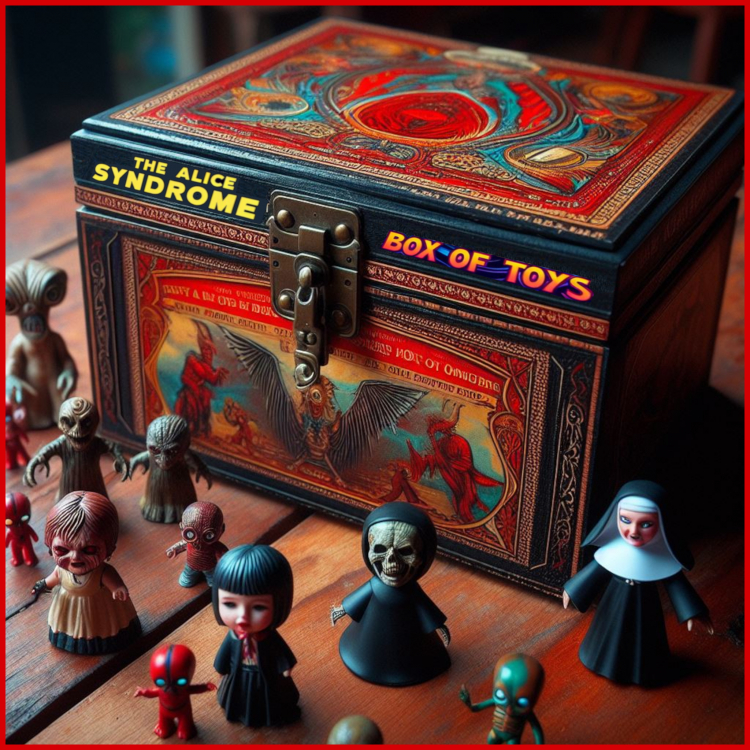 New album release – Box of Toys 08/01/2023
New album release – Box of Toys 08/01/2023
















